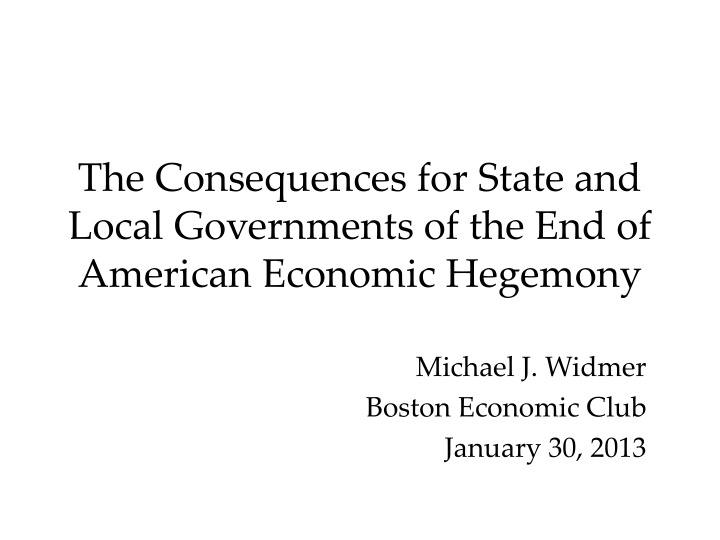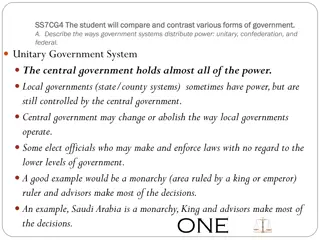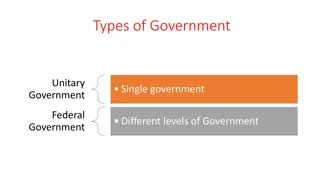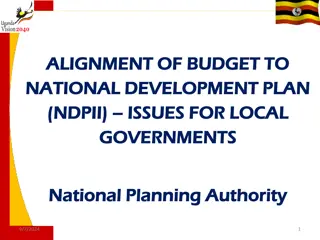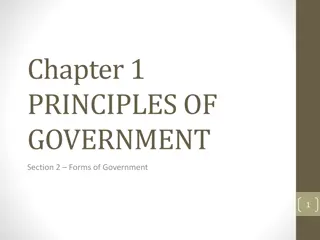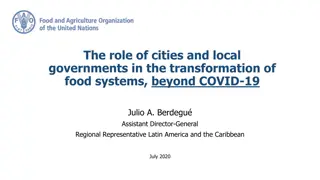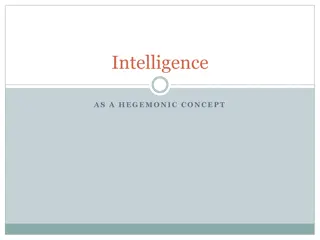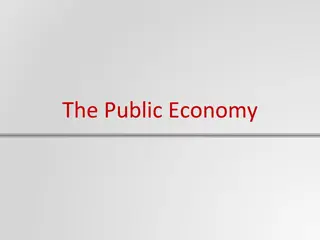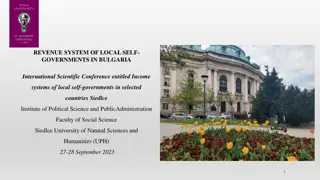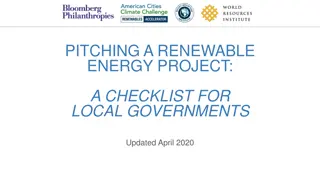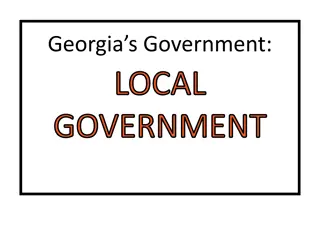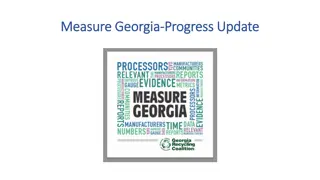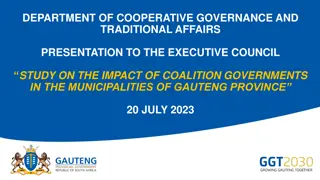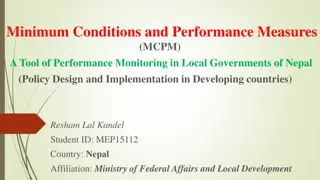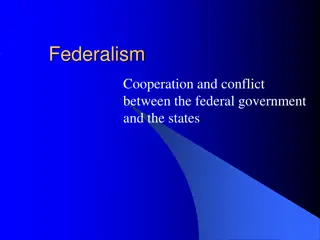Challenges for State and Local Governments Post-American Economic Hegemony
The shift in global economic dynamics signals challenges for state and local governments in the U.S., impacting their funding capacity for essential programs and services. Factors like global economic competition, job loss, middle-class erosion, aging population, unsustainable public benefits, wars, tax cuts, anti-government sentiments, and the fading American dream contribute to this predicament.
Download Presentation

Please find below an Image/Link to download the presentation.
The content on the website is provided AS IS for your information and personal use only. It may not be sold, licensed, or shared on other websites without obtaining consent from the author.If you encounter any issues during the download, it is possible that the publisher has removed the file from their server.
You are allowed to download the files provided on this website for personal or commercial use, subject to the condition that they are used lawfully. All files are the property of their respective owners.
The content on the website is provided AS IS for your information and personal use only. It may not be sold, licensed, or shared on other websites without obtaining consent from the author.
E N D
Presentation Transcript
The Consequences for State and Local Governments of the End of American Economic Hegemony Michael J. Widmer Boston Economic Club January 30, 2013
Premise A combination of economic, political, and social/cultural factors tied to the end of American economic hegemony will permanently constrain the ability of state and local governments to fund programs and services 2
Key Factors Global economic competition Loss of manufacturing jobs Erosion of middle class Aging of the population Unaffordable public sector benefits Fighting two wars while cutting taxes Explosion of anti-government ideology Unraveling of the American dream 3
Americas Ascendancy as the Global Economic Power 4
Ten-Fold Increase in U.S. Gross National Product 3,000 2,500 2,000 $ Billions 1,500 1,000 500 0 1945 1947 1949 1951 1953 1955 1957 1959 1961 1963 1965 1967 1969 1971 1973 1975 1977 1979 Source: U.S. Census, Statistical Abstract of the U.S., 1999 5
Growth in Manufacturing Drives Middle Class 21 U.S. Manufacturing Employment 19 17 15 (Millions) 13 11 9 7 5 1940 1942 1944 1946 1948 1950 1952 1954 1956 1958 1960 1962 1964 1966 1968 1970 1972 1974 1976 1978 1980 Source: Moody s Analytics 6
Median Family Incomes Increase Seven-Fold $25,000 $20,000 $15,000 $10,000 $5,000 $0 1947 1950 1955 1960 1965 1970 1975 1980 Source: U.S. Census, Statistical Abstract of the U.S., 1999 (Table 1427) 7
Percent of Owner-Occupied Homes Jumps 50 Percent 70 Percent of U.S. Homes That Are 64.4 65 62.8 61.8 Owner-Occupied 60 55 55 50 43.6 45 40 1940 1950 1960 1970 1980 Source: U.S. Census, Statistical Abstract of the U.S., 1999 8
Higher Education Enrollment Soars Source: Trends in United States Higher Education from Massification to Post Massification, Patricia J. Gumport et al, Stanford University, 1997 9
Growth in Power of Public Sector Unions 8,000 7,091 7,000 Membership in Public Sector Unions 6,000 5,000 (thousands) 4,000 3,000 2,000 1,000 0 1973 1974 1975 1976 1977 1978 1979 1980 1981 1983 1984 1985 1986 1987 1988 1989 1990 1991 1992 1993 1994 Sources: Barry T. Hirsch and David A. Macpherson, "Union Membership and Coverage Database from the Current Population Survey: Note," Industrial and Labor Relations Review, Vol. 56, No. 2, January 2003, pp. 349-54. (in pdf); data not available for 1982 10
Political Underpinnings Broad bipartisan support for a national social agenda to build a safety net for those in need 11
The Unraveling of the American Dream 12
GNP Has Continued to Grow But Underlying Economic and Political Forces Have Changed Dramatically 18,000 16,000 14,000 Growth in U.S. GNP 12,000 $ Billions 10,000 8,000 6,000 4,000 2,000 0 Source: St. Louis Federal Reserve 13
U.S. Dominance of Global Economy Erodes 45% 40% 35% 30% 25% 20% 15% 10% 5% 0% 1962 1964 1966 1968 1970 1972 1974 1976 1978 1980 1982 1984 1986 1988 1990 1992 1994 1996 1998 2000 2002 2004 2006 2008 2010 United States European Union China Japan Source: WorldBank 14
Dramatic Drop in Manufacturing Jobs 21 U.S. Manufacturing Employment 19 17 15 Millions 13 11 9 7 5 1940 1942 1944 1946 1948 1950 1952 1954 1956 1958 1960 1962 1964 1966 1968 1970 1972 1974 1976 1978 1980 1982 1984 1986 1988 1990 1992 1994 1996 1998 2000 2002 2004 2006 2008 2010 2012 Source: Moody s Analytics 15
Long-Term Decline in Private Sector Unions 30% Union Members as a Percent of All 25% Private Sector Workers 20% 15% 10% 6.6% 5% 0% 1995 1973 1975 1977 1979 1981 1983 1985 1987 1989 1991 1993 1997 1999 2001 2003 2005 2007 2009 2011 Sources: Barry T. Hirsch and David A. Macpherson, "Union Membership and Coverage Database from the Current Population Survey: Note," Industrial and Labor Relations Review, Vol. 56, No. 2, January 2003, pp. 349-54. (in pdf); U.S. Bureau of Labor Statistics 16
Mens Real Income Has Fallen Over Past 40 Years Source: Already more than a lost decade, Heidi Shierholz and Elise Gould, Economic Policy Institute, September 12, 2012 17
The Middle Class is Being Left Behind Top 1% of Households 275% Middle Fifth of Households 35% Poorest Fifth of Households 18% Real GDP 125% Source: Congressional Budget Office, Trends in the Distribution of Household Income Between 1979 and 2007,October 2011; Moody s Analytics 18
U.S. Trailing Other Nations in Educating the Next Generation Source: OECD 19
Joseph Stiglitz: 'The American Dream Has Become a Myth' SPIEGEL: The US has always thought of itself as a land of opportunity where people can go from rags to riches. What has become of the American dream? Stiglitz: This belief is still powerful, but the American dream has become a myth. The life chances of a young US citizen are more dependent on the income and education of his parents than in any other advanced industrial country for which there is data. The belief in the American dream is reinforced by anecdotes, by dramatic examples of individuals who have made it from the bottom to the top -- but what matters most are an individual's life chances. The belief in the American dream is not supported by the data. Source: Der Spiegel interview with Joseph Stiglitz, October 2, 2012 20
A Rapidly Aging Population Adds to the Fiscal Burden Source: Moody s Analytics 21
Fewer Workers Covering More Social Security Beneficiaries 6 Ratio of Social Security Covered 5 Workers to Beneficiaries 4 3 2 1 0 1960 1970 1980 1990 2000 2010 2020 2030 2040 Source: Social Security Administration 22
Staggering Costs of Retirement Benefits Nationally, unfunded liabilities for retirement benefits total well over $1 trillion. In Massachusetts, state and municipalities have more than $80 billion in unfunded liabilities for retirement benefits already earned. Unfunded Liability (billions) $7.3 $14.3 $13.1 Pensions State Teachers Municipal Retiree Health Care State Municipal Total $16.7 $30.0 $81.4 23
Public Sector Employees Cost Roughly 30 Percent More Than Private $45 $41.56 $40 $35 $14.65 $28.95 $30 Cost Per Hour $25 $8.58 $20 $15 $26.91 $10 $20.36 $5 $0 Private State & Local Wages and salaries Total benefits Source: U.S. Bureau of Labor Statistics, Employer Cost for Employee Compensation, December 11, 2012 24
Health Care Costs Growing Twice the Rate of Inflation 450 400 350 300 250 200 150 100 50 0 1984 1986 1988 1990 1992 1994 1996 1998 2000 2002 2004 2006 2008 2010 2012 CPI CPI-Medical Source: St. Louis Federal Reserve 25
Public Sector Unions on the Defensive 8,500 Membership in Public Sector Unions 8,000 7,500 7,328 (thousands) 7,000 6,500 6,000 5,500 5,000 1995 1996 1997 1998 1999 2000 2001 2002 2003 2004 2005 2006 2007 2008 2009 2010 2011 2012 Sources: Barry T. Hirsch and David A. Macpherson, "Union Membership and Coverage Database from the Current Population Survey: Note," Industrial and Labor Relations Review, Vol. 56, No. 2, January 2003, pp. 349-54. (in pdf); U.S. Bureau of Labor Statistics 26
Bush Tax Cuts and Recession Drive Down Federal Revenues Bush Tax Cuts 22 21 Recession U.S. Government Receipts as a 20 19 Percent of GDP 18 17 16 15 14 13 12 Source: www.whitehouse.gov/omb/budget/Historicals 27
Federal Revenues Fall Below Spending Growth 4,500,000 4,000,000 3,500,000 3,000,000 $ Millions Bush Tax Cuts 2,500,000 2,000,000 Recession 1,500,000 1,000,000 500,000 0 1990 1991 1992 1993 1994 1995 1996 1997 1998 1999 2000 2001 2002 2003 2004 2005 2006 2007 2008 2009 2010 2011 2012 2013 2014 Outlays Receipts Source: www.whitehouse.gov/omb/budget/Historicals 28
The Plague of Federal Deficits 400,000 200,000 0 1976 1978 1980 1982 1984 1986 1988 1990 1992 1994 1996 1998 2000 2002 2004 2006 2008 2010 2012 2014 -200,000 -400,000 $ Millions -600,000 -800,000 -1,000,000 -1,200,000 -1,400,000 -1,600,000 Source: www.whitehouse.gov/omb/budget/Historicals 29
New Political Realities Fracturing of consensus on the role of government Debate moves to the right Anti-tax ideology becomes centerpiece of Republican Party Large federal spending cuts and entitlement reforms will dominate the Washington debate over the next decade 30
The Squeeze on State and Local Governments Federal deficit reduction Aging of the population Paying for generous retirement benefits Public much less receptive to tax increases Broad distrust of government s ability to address social problems 31
